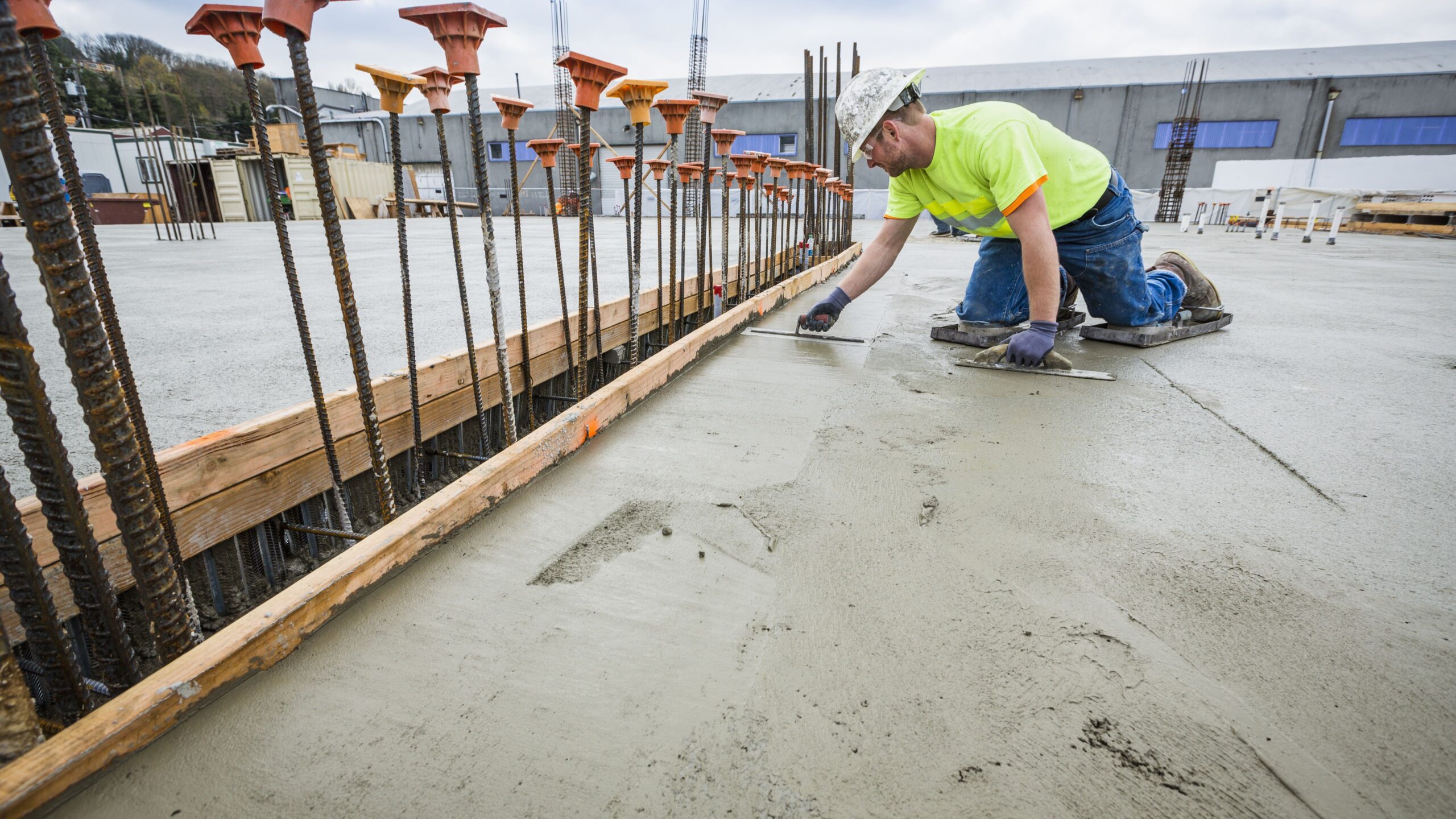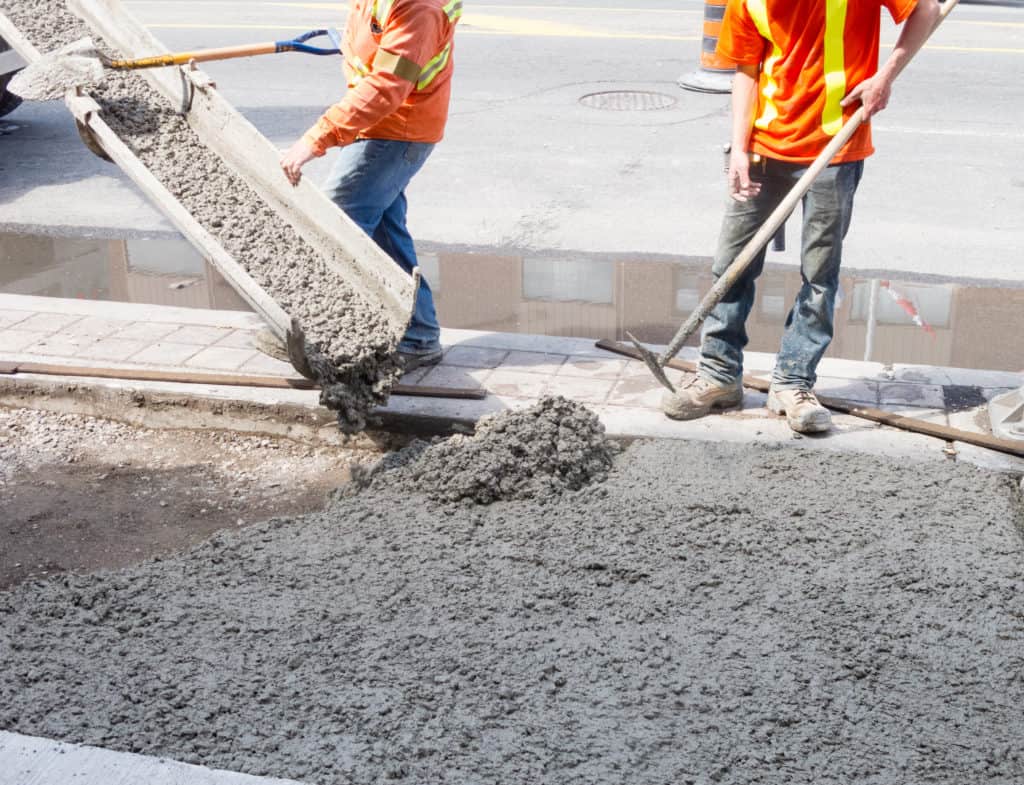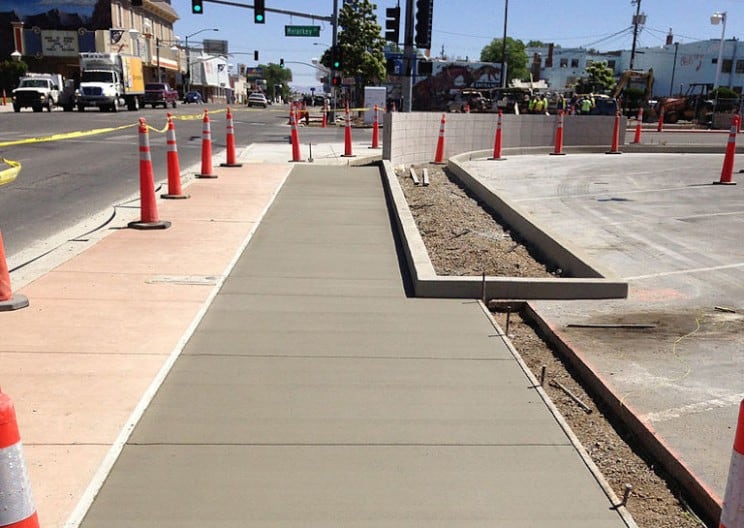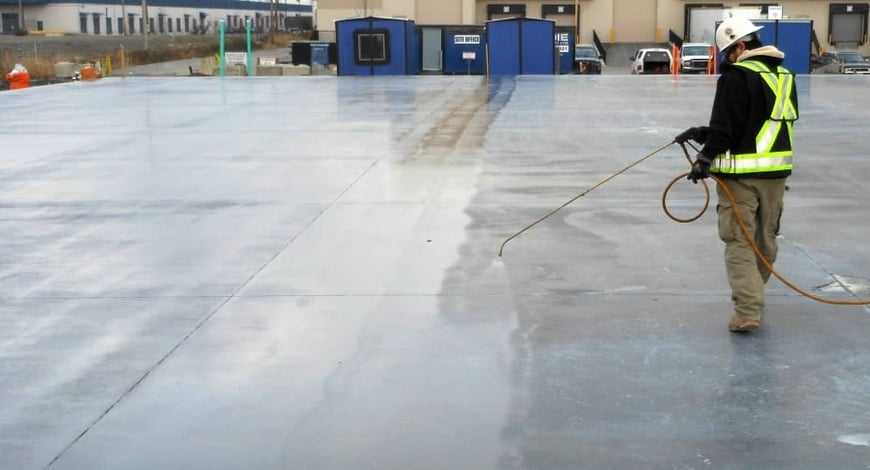
Troubleshooting Concrete Slabs
It’s really important to be aware and try to solve concrete construction problems before they happen. For instance, leaving bleed water on a slab surface for too long can cause sand streaks or rock jams in pump lines. Over the years in the construction industry, steps have been added or removed from the concrete curing process to eliminate problems. We’ve gathered some major problems followed by solutions so you can have a successful concrete job done right.
Problem: Excessive Bleeding
Bleeding happens when heavy components in the concrete, like sand and aggregate, settle and push the excess water to the top. It’s not that bleeding is always bad it’s just that there are factors that should be considered to avoid issues. When bleeding happens it lowers the water-cement ratio making the concrete dense. It becomes a problem when the concrete bleeds too fast or for too long. This can cause major problems like rock jams in pump lines, sand streaks in walls, weak horizontal construction joints, and voids beneath rebars and aggregate particles.
You may feel that the bleeding isn’t excessive but if you’re finishing concrete flatwork at the wrong time that can be a whole different issue. If you finish before bleed water has a chance to be evaporated it can cause dusting, craze cracking, scaling, and low wear resistance. Working bleed water into the surface also allows water, de-icing salts, and other harmful chemicals to compromise the concrete.
Solution: This can all be avoided. Just do your best to not add too much water to the concrete mixture. Most of the water ends up bleeding out of the concrete anyway. Be sure to place concrete at the lowest possible slump. If a higher slump is needed to speed placement, consider using a superplasticizer. Consider doing the following:
• Add more finely ground cement. Concrete made with high early strength tends to bleed less because the cement is ground finer than usual.
• Add more cement in general. Richer mixes bleed less however, you’ll want to be mindful that although it will be stronger, higher-strength slabs can curl.
Problem: Slab Curling
As we just discussed, richer mixes cause curling. This means that the slab rises up at the corners and edges this can result in a crack at the mid-panel. The reason why this happens is that the top of a slab dries/cools faster than the bottom. The loss of support is what causes cracking.
Solution: Ultimately, you want to take proper steps to avoid curling to happen in the first place. You can do this by evaluating your design decisions, material choices, and construction practices. However, if curling happens on a slab it can be repaired but it can be pretty pricey. One of the ways to fix it is by grinding the curled up areas. The only problem with this is if you do this too soon and the edges end up relaxing it will no longer be level. You can also grout to restore the support. Sometimes that’s all you’ll need to do to fix the problem.
Problem: Thin Slabs
You get paid based on the size and thickness of the slab. Majority of the time people have a requirement of how thick they need the slab to be. However, pretty often the thickness of the concrete slab ends up short. If you’re needing the slab to be 4 inches thick but once completed ends up being 3.9 inches, that can result in it not meeting the requirement. This can be a huge issue because if a slab ends up short then it won’t pass inspection with state laws and requirements.
Solutions: The thickness of each floor drastically varies in different areas and measurement tools can read differently. So how do we achieve a better overall thickness so you’re in the clear when it comes to inspection? Make the slab thicker than specified. You can also control the fine grading closely but that can be costly and it takes a lot of skill.
Curing Solution: Cure Tender USA
You can achieve a quality concrete slab every time with the assistance of the Cure Tender USA. It’s a solar-powered concrete water curing system that helps save you time and money during the curing period. It automatically releases water required for concrete curing onto the concrete and under the cure blankets. This allows the concrete to be unattended since it’s self-contained. The Cure Tender can be used on vertical or flat concrete. Just hook up the specially designed watering hoses and the concrete will cure for 50 to 60 hours with a constant supply from the 725-gallon tank. Ready to see how it can work for you? Contact us today at 714-448-2400.







